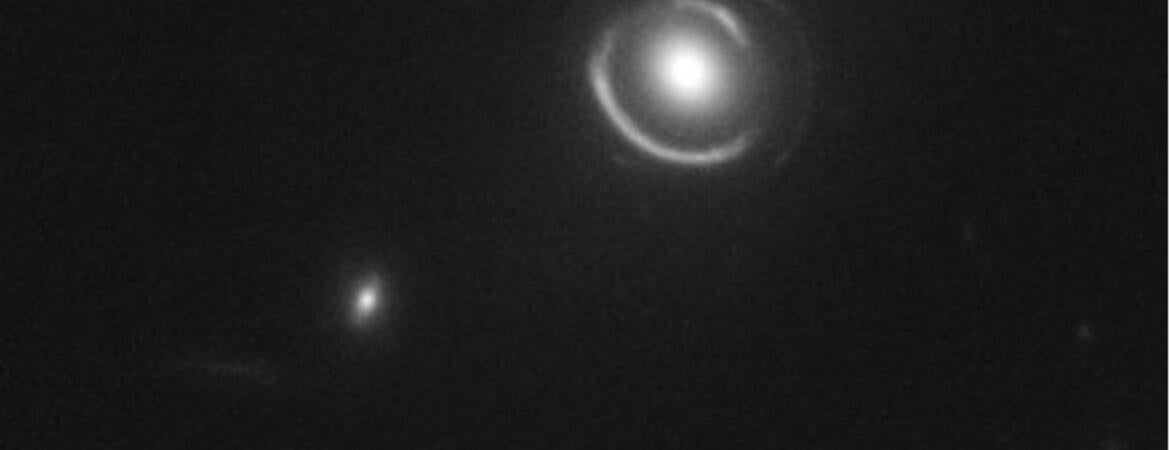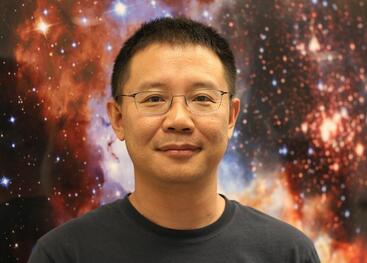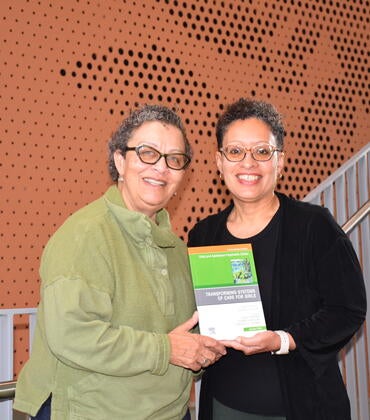
Thought to make up 85% of matter in the universe, dark matter is nonluminous and its nature is not well understood. While normal matter absorbs, reflects, and emits light, dark matter cannot be seen directly, making it harder to detect. A theory called “self-interacting dark matter,” or SIDM, proposes that dark matter particles self-interact through a dark force, strongly colliding with one another close to the center of a galaxy.
In work published in The Astrophysical Journal Letters, a research team led by Hai-Bo Yu, a professor of physics and astronomy at the University of California, Riverside, reports that SIDM simultaneously can explain two astrophysics puzzles in opposite extremes.
“The first is a high-density dark matter halo in a massive elliptical galaxy,” Yu said. “The halo was detected through observations of strong gravitational lensing, and its density is so high that it is extremely unlikely in the prevailing cold dark matter theory. The second is that dark matter halos of ultra-diffuse galaxies have extremely low densities and they are difficult to explain by the cold dark matter theory.”
A dark matter halo is the halo of invisible matter that permeates and surrounds a galaxy or a cluster of galaxies. Gravitational lensing takes place when light traveling across the universe from distant galaxies gets bent around massive objects. The cold dark matter, or CDM, paradigm/theory assumes dark matter particles are collisionless. As their name suggests, ultra-diffuse galaxies have extremely low luminosity and the distribution of their stars and gas is spread out.
Yu was joined in the study by Ethan Nadler, a joint postdoctoral fellow at the Carnegie Observatories and University of Southern California, and Daneng Yang, a postdoctoral scholar at UCR.
To show SIDM can explain the two astrophysics puzzles, the team conducted the first high-resolution simulations of cosmic structure formation with strong dark matter self-interactions on relevant mass scales for the strong lensing halo and ultra-diffuse galaxies.
“These self-interactions lead to heat transfer in the halo, which diversifies the halo density in the central regions of galaxies,” Nadler said. “In other words, some halos have higher central densities, and others have lower central densities, compared to their CDM counterparts, with details depending on the cosmic evolution history and environment of individual halos.”
According to the team, the two puzzles pose a formidable challenge to the standard CDM paradigm.
“CDM is challenged to explain these puzzles,” Yang said. “SIDM is arguably the compelling candidate to reconcile the two opposite extremes. No other explanations are available in the literature. Now there is an intriguing possibility that dark matter may be more complex and vibrant than we expected.”
The research also demonstrates the power of probing dark matter through astrophysical observations, with the tool of computer simulations of cosmic structure formation.
“We hope our work encourages more studies in this promising research area,” Yu said. “It will be a particularly timely development given the expected influx of data in the near future from astronomical observatories, including the James Webb Space Telescope and upcoming Rubin Observatory.”
Since around 2009, work by Yu and collaborators has helped popularize SIDM in the particle physics and astrophysics communities.
The research was supported by the John Templeton Foundation and the U.S. Department of Energy.
The title of the open-access paper is “A Self-interacting Dark Matter Solution to the Extreme Diversity of Low-mass Halo Properties.”
Credit for header image showing gravitational lens system SDSSJ0946+1006: NASA, ESA, and R. Gavazzi and T. Treu. The image is modified from the figure here.




